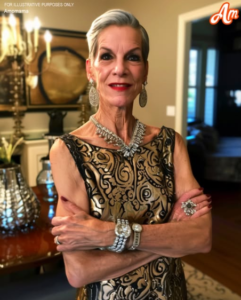My MIL Always Belittled My Mom and Our Family Heirlooms – but She Ended Up Digging Her Own Grave
From the moment I married my husband, I knew my mother-in-law had strong opinions—especially about my family. She came from old money and never missed a chance to remind me that, in her eyes, my side of the family was less than. My mother, a hardworking woman who raised me with love and resilience, was often the target of her snide remarks.
But what stung the most was her attitude toward our family heirlooms.
We didn’t have extravagant wealth, but we had cherished pieces passed down for generations—an antique locket from my great-grandmother, a hand-carved wooden jewelry box from my grandfather, and a beautiful set of china that had graced our family table for over a century. My MIL, however, scoffed at them.
“These trinkets? Hardly worth anything,” she once sneered, inspecting the locket with clear disdain. “Nothing compared to real valuables.”
I bit my tongue, but it hurt. My mother had given me that locket on my wedding day, whispering, “This carries the love of our ancestors. Keep it close.”
My MIL, on the other hand, loved flaunting her valuable possessions—expensive jewelry, rare antiques, and designer pieces. She prided herself on her exquisite taste and looked down on anything that didn’t fit her high-society standard.
Then karma stepped in.
One evening, my MIL invited friends over for a grand dinner party. She had been going on and on about a rare, expensive brooch she had recently acquired—a supposed Victorian-era piece encrusted with emeralds and diamonds.
As she showed it off, one of her guests, an expert in antiques, grew quiet. He asked to examine it closely. Then, with a knowing smirk, he said, “This isn’t Victorian. It’s a well-made reproduction—mass-produced in the 1950s.”
Silence fell over the room.
My MIL’s face turned pale. “That’s impossible,” she sputtered. But the expert continued, explaining how the materials, engraving, and style were telltale signs of a more modern replica.
The guests exchanged looks, and a few even stifled laughs. My MIL had spent a fortune on what she thought was a prestigious, valuable antique—only to find out it was little more than a fancy knockoff.
I had never seen her so humiliated.
Later that evening, as she sulked in embarrassment, my mother leaned over to me and whispered, “True value isn’t measured in price—it’s in the love and history behind something.”
I smiled, fingering the locket around my neck.
My MIL never commented on our family heirlooms again.


